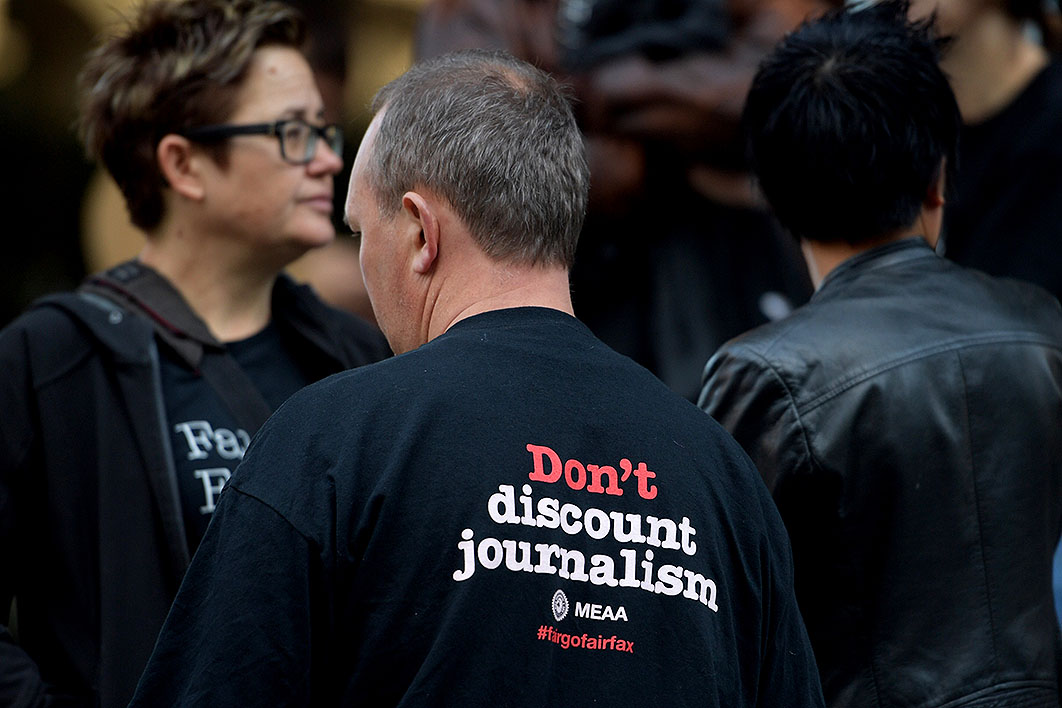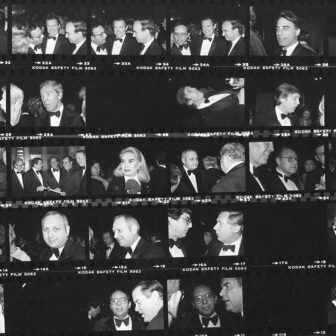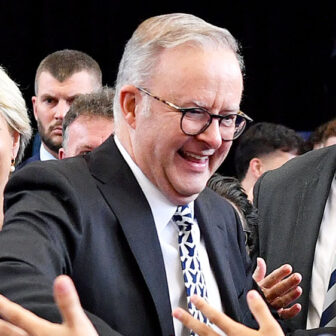Back when the Nine–Fairfax merger-that’s-really-a-takeover was announced, fearless investigative journalist Kate McClymont reacted with shock and anger to the bloodless way the news was handed down by chief executive Greg Hywood. By the end of the day, she’d swung to pragmatic optimism, arguing that the partnership could be healthy as long as Nine remained strong against commercial pressures. “I’m not sure that they” — the readers — “care who owns us as long as our journalism is good,” she said.
Readers used to care about this stuff. The last time there was talk of a merger between Nine and Fairfax, back in 1991, people literally marched in the streets. Not a bunch of journalists with “Fair Go Fairfax” placards, but members of the public who cared fiercely about their papers and didn’t want Kerry Packer to get his hands on them.
This time around, the public’s response seemed more akin to a resigned shrug. When the government bulldozed through its media reform laws last year, abolishing the two-out-of-three rule and paving the way for the seemingly inevitable merger of Nine and Fairfax, it didn’t register much at all. The idea of investing in decent public interest journalism was starting to sound nostalgic — naive, even. Did anyone, outside the journos whose jobs are threatened, care enough?
Last week’s submission by the Media, Entertainment and Arts Alliance to the Australian Competition and Consumer Commission’s inquiry into the merger offers a glimmer of hope. According to the Alliance, 1147 submissions have been made to the watchdog’s investigation via the union’s portal, far exceeding its expectations.
The Alliance’s submission reiterates its call on the ACCC to reject the merger. “Critically,” it warns, “whatever is lost will never be replaced.” Perhaps the most compelling aspect of the submission is its reference to the proposed merger of New Zealand Media and Entertainment, or NZME, and Fairfax NZ, first mooted in 2016. There, the High Court considered issues very similar to those that arise in the current proposed merger, and ultimately blocked it.
The NZ High Court ruled that the merger would substantially lessen competition and in doing so reduce media plurality and the quality of news in New Zealand. As the Alliance submission describes it, “Both media plurality and quality of news were held to be so fundamental to the public and of such real and national significance that any benefits of the proposed merger could never outweigh the detriments.”
We don’t know what we don’t know — it’s impossible to quantify the number of stories not being told these days. Newsrooms across the board have been stripped of resources, and just this week News Corp revealed that another thirty editorial staff would be laid off. At Fairfax, almost 800 editorial jobs were cut between 2011 and 2016. In 2017 the company made a further $30 million in cuts to its metropolitan mastheads’ editorial budget, making one-in-four of its remaining journalists redundant. Part of the merger deal includes a further $50 million in savings.
The NZ High Court acknowledged these dangers in its decision: “We consider it an inevitable part of the rationale for the merger that efficiencies pursued would include scaling back journalistic and editorial resources, as well as managerial resources. One necessary consequence of doing so would be a reduction in quality.” The court anticipated “a material reduction in the scope of topics reported upon, and the diversity of views expressed within them.” Most disconcertingly, the court “considered it foreseeable that such adverse changes in quality could occur without readers of their online sites being aware that it had occurred.”
So back to Kate McClymont’s comment — that readers don’t care “as long as the journalism is good.” Readers need to realise that good journalism is implicitly tied to resources. Nine may well snap up some of Fairfax’s investigative guns, but as the Age’s Nick McKenzie warned when the merger was announced, “Consolidation, synergies, that equates to job cuts… That’s the stark reality. The face of that, what that looks like, we don’t know… it’s a great concern.”
The thing is, the quality of the journalism is tied to the will and culture of the owners of the joint. The truth is we have no idea if Nine will retain Fairfax’s major mastheads, let alone 160 community, regional, rural and suburban publications across Australia and New Zealand.
Then there’s the slippery definition of what constitutes journalism, sorry — *grimace* — content. The Alliance obviously has a view on this:
Whilst a substantial amount of the services provided by Fairfax and Nine are available online and are open to compete in the global market, where there is arguably strong competition, the reality is that Fairfax and Nine are competing in a market to provide Australian domestic news and media, not global news and media. The global information market does not adequately serve Australian domestic news needs, due to economies of scale and perceptions as to Australia’s newsworthiness. As the NZ High Court recognised, recycled news on an online platform is not production of news content. The High Court in NZME and Fairfax drew the distinction between those generating news and those disseminating the news produced by others. It noted that despite the massive proliferation of publishing online, only a small percentage of this new publishing activity is focused primarily on the generation and dissemination of original, local, news and current affairs.
The Alliance recommends that the merger be rejected. But it has a plan B, under which — among many other things — Nine would be required to adopt the Fairfax editorial charter of independence, which includes the following lines: “That full editorial control of the newspapers, within a negotiated, fixed budget, be vested with the editors of the papers and that the editors alone shall determine the daily editorial content of the newspapers.”
The negotiated, fixed budget is the kicker. If resources are reduced, no amount of fierce editorial independence will make up for the stories that just don’t get commissioned.
All of which comes back to the public’s responsibility to scrutinise these kinds of merger decisions and the impact they have on public life. This goes beyond loyal readers of Fairfax. We don’t know what was in those 1147 submissions, nor the total number received by the ACCC, and who submitted them.
Let’s hope it’s not just journalists who continue to do the heavy lifting. There needs to be a wider awareness of the impact of reduced resources in a newsroom. We all need to read between the lines to see the stories not being told. We can no longer rely on moneyed individuals, family dynasties, new platforms or advertising to pay for journalism that directly contributes to the health of our democracy.
Subscribe to the stuff that matters to you. It’s the only concrete way to show the bean counters that difficult, time-consuming journalism has value. •




